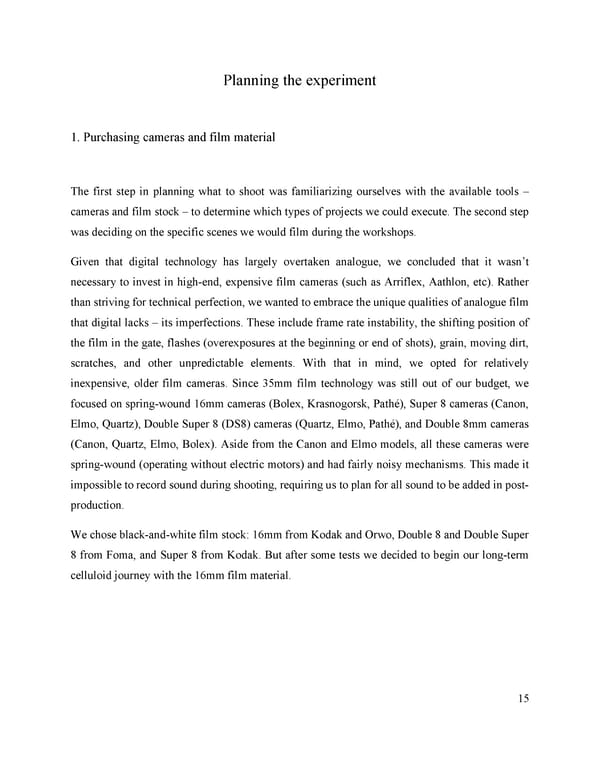Planning the experiment 1. Purchasing cameras and film material The first step in planning what to shoot was familiarizing ourselves with the available tools – cameras and film stock – to determine which types of projects we could execute. The second step was deciding on the specific scenes we would film during the workshops. Given that digital technology has largely overtaken analogue, we concluded that it wasn’t necessary to invest in high-end, expensive film cameras (such as Arriflex, Aathlon, etc). Rather than striving for technical perfection, we wanted to embrace the unique qualities of analogue film that digital lacks – its imperfections. These include frame rate instability, the shifting position of the film in the gate, flashes (overexposures at the beginning or end of shots), grain, moving dirt, scratches, and other unpredictable elements. With that in mind, we opted for relatively inexpensive, older film cameras. Since 35mm film technology was still out of our budget, we focused on spring-wound 16mm cameras (Bolex, Krasnogorsk, Pathé), Super 8 cameras (Canon, Elmo, Quartz), Double Super 8 (DS8) cameras (Quartz, Elmo, Pathé), and Double 8mm cameras (Canon, Quartz, Elmo, Bolex). Aside from the Canon and Elmo models, all these cameras were spring-wound (operating without electric motors) and had fairly noisy mechanisms. This made it impossible to record sound during shooting, requiring us to plan for all sound to be added in post- production. We chose black-and-white film stock: 16mm from Kodak and Orwo, Double 8 and Double Super 8 from Foma, and Super 8 from Kodak. But after some tests we decided to begin our long-term celluloid journey with the 16mm film material. 15
 Lost Analogue: Exploring Film, Music, and Interdisciplinary Methods in Education Page 15 Page 17
Lost Analogue: Exploring Film, Music, and Interdisciplinary Methods in Education Page 15 Page 17